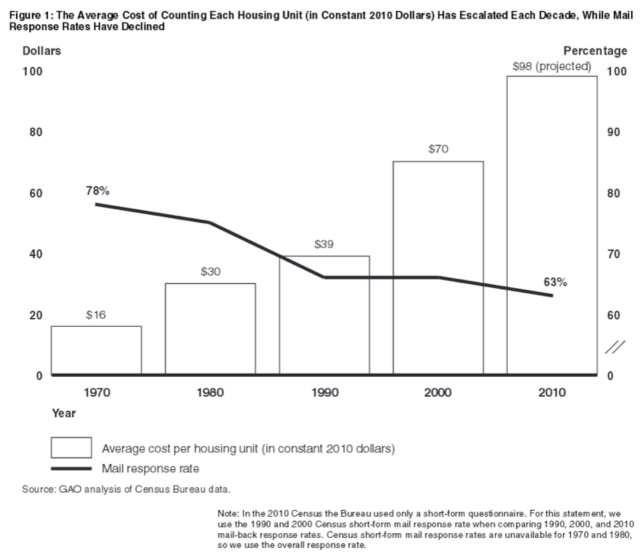Planning for the 2020 Census
Photo Credit: U.S. Census Bureau, Public Information Office
Although the 2020 Census is about 6 years away, preparations are well under way. The Census Bureau has designated today as Census Day 2014, as the Bureau is conducting its first significant test of the methods and technologies it’s considering for the 2020 Census.
We have often reported on lessons learned from the 2010 Census, and on what steps the Bureau can take to control costs while maintaining accuracy for the 2020 Census. The U.S. population is growing steadily larger, more diverse, increasingly difficult to find, and reluctant to participate in the census. Due in part to these factors, the traditional approach of mailing paper questionnaires and following up in person with people who don’t respond is no longer cost effective. The cost of conducting the census has increased by more than 500 percent over the past five decades, while the mail response rate declined 15 percentage points over the same period.
Excerpted from GAO-11-496T
Over the last few years, we have made recommendations in these and other areas to address the Bureau’s ability to better control costs and deliver an accurate count:
- Aligning the Bureau’s management, culture, and business practices with a cost-effective count. In 2012, we noted that the Bureau had begun to make census planning more consistent with key management practices, through steps such as issuing a series of planning memos to document goals, assumptions, and timing for the 2020 Census. However, we recommended several actions that the Bureau could take to build on that early planning, such as setting workforce planning goals and monitoring them.
- Improving census scheduling practices. In 2013, we reported that the Bureau is not producing reliable schedules for two programs most relevant to building its address database. Without reliable schedule information, the Bureau may believe that all of the work is on schedule when it may not be.
- Prioritizing IT research and testing. The Bureau is considering new technologies for the 2020 Census, such as methods for using the Internet and allowing employees’ personal smartphones to collect responses. We reported in April that several key IT-related research and testing projects lacked sufficient schedules and plans, and that the Bureau had not prioritized its projects.
As the countdown to 2020 progresses, we will continue to monitor the Census Bureau to help Congress ensure the Bureau stays on track toward cost-effectively collecting high-quality census data to fulfill its constitutionally mandated responsibility.
Comments on the WatchBlog? Contact blog@gao.gov.







